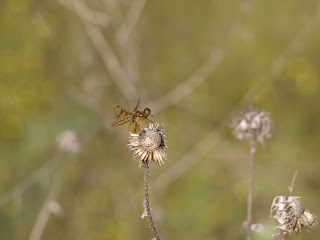Since moving to Texas in 2008, I have been charmed by the
Gulf Fritillary Butterfly. Its fiery orange inner wings, and
silvery outside make it flash as it zooms about the garden. It is a
common butterfly in Austin, but I never get tired of seeing it. I am such
a fan that I think the Gulf Fritillary should replace the Monarch as the Texas State Butterfly.
No offense to the Monarch, as it is also
an incredible butterfly with its long migration, warning colors, and
its special place in the hearts of children as they learn about life
cycles in science class.
The Monarch is the state butterfly of at least 8 different states
including Texas, and I think some of the attention can be given to our Gulf
Fritillary.
The Gulf
Fritillary deserves recognition as the most common representative
to the United States of the tropical longwing butterflies (Heliconians.) Like
the Monarch, the Fritillary wears bright warning colors, has a life cycle that
can be watched in the backyard (if you live where its food grows), and is large
and beautiful enough to get the attention of anyone. The Passion vine, the
fritillary’s host plant, grows with the zest of tropical plants and
displays extravagant purple flowers. The
butterfly is almost tame living in backyards, and allowing you to get very
close with slow and steady movements.
This summer and
fall, I have been lucky enough to capture much of the Gulf Fritillary's life cycle
with my camera, thanks to the passion vine I planted this spring.
Many of the following photos were included in previous posts, but collectively
they create a mini story of the Gulf Fritillaries in my yard.
 |
| First I planted a Passion vine, and up it goes. |
 |
| Laying eggs |
 |
| Little golden egg |
 |
| Good luck little egg. |
 |
| Romance |
 |
| Time to eat |
 |
| Once I counted over 70 caterpillars! |
 |
| Look at that warning color. Don't eat me! |
 |
| A hidden chrysalis looks like a dry leaf. |
 |
| All the Leaves are gone |
 |
| Just hatching! |
 |
| Zinnas are great for hungry Butterflies. |
 |
| On the Wing |








































